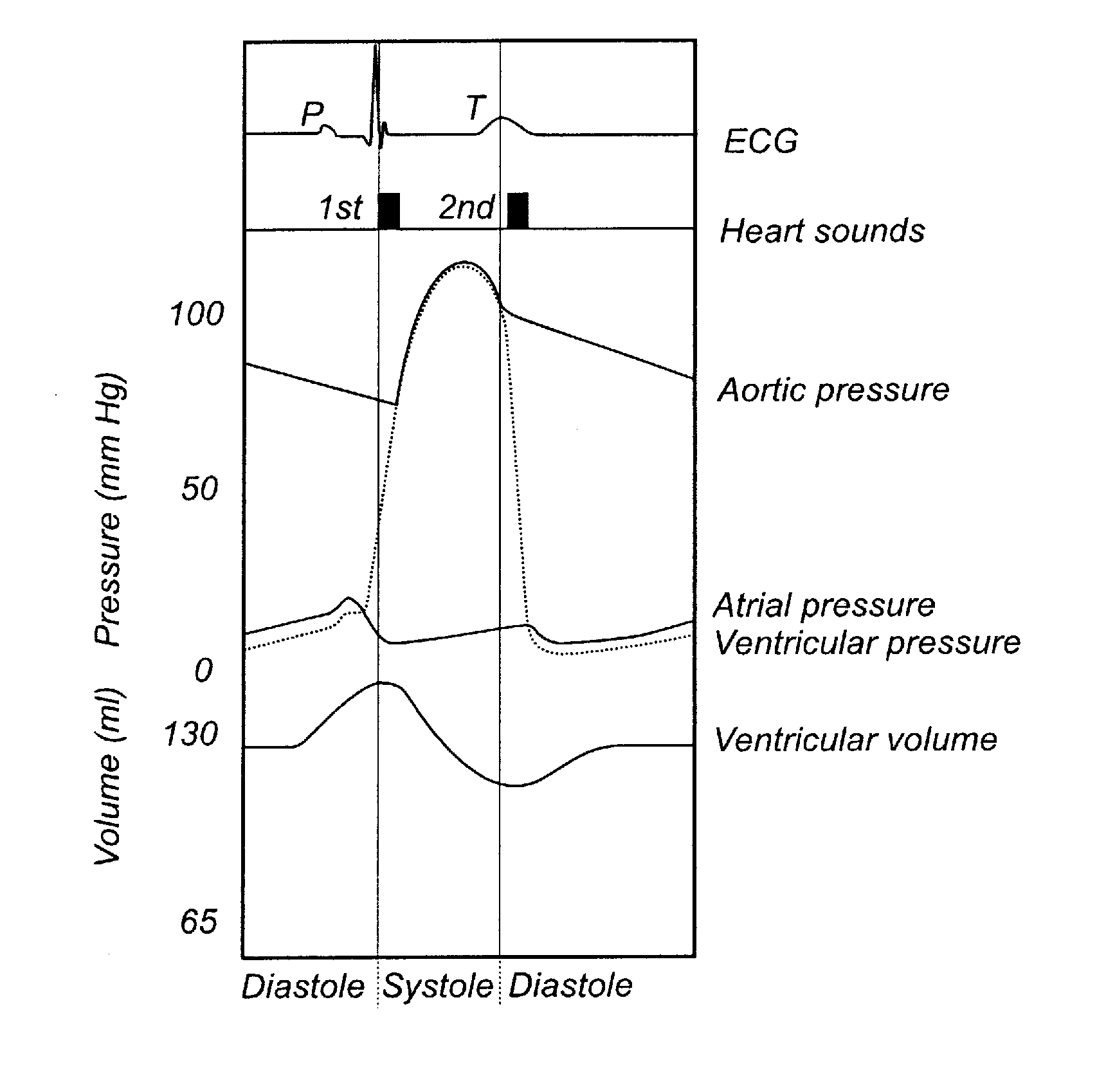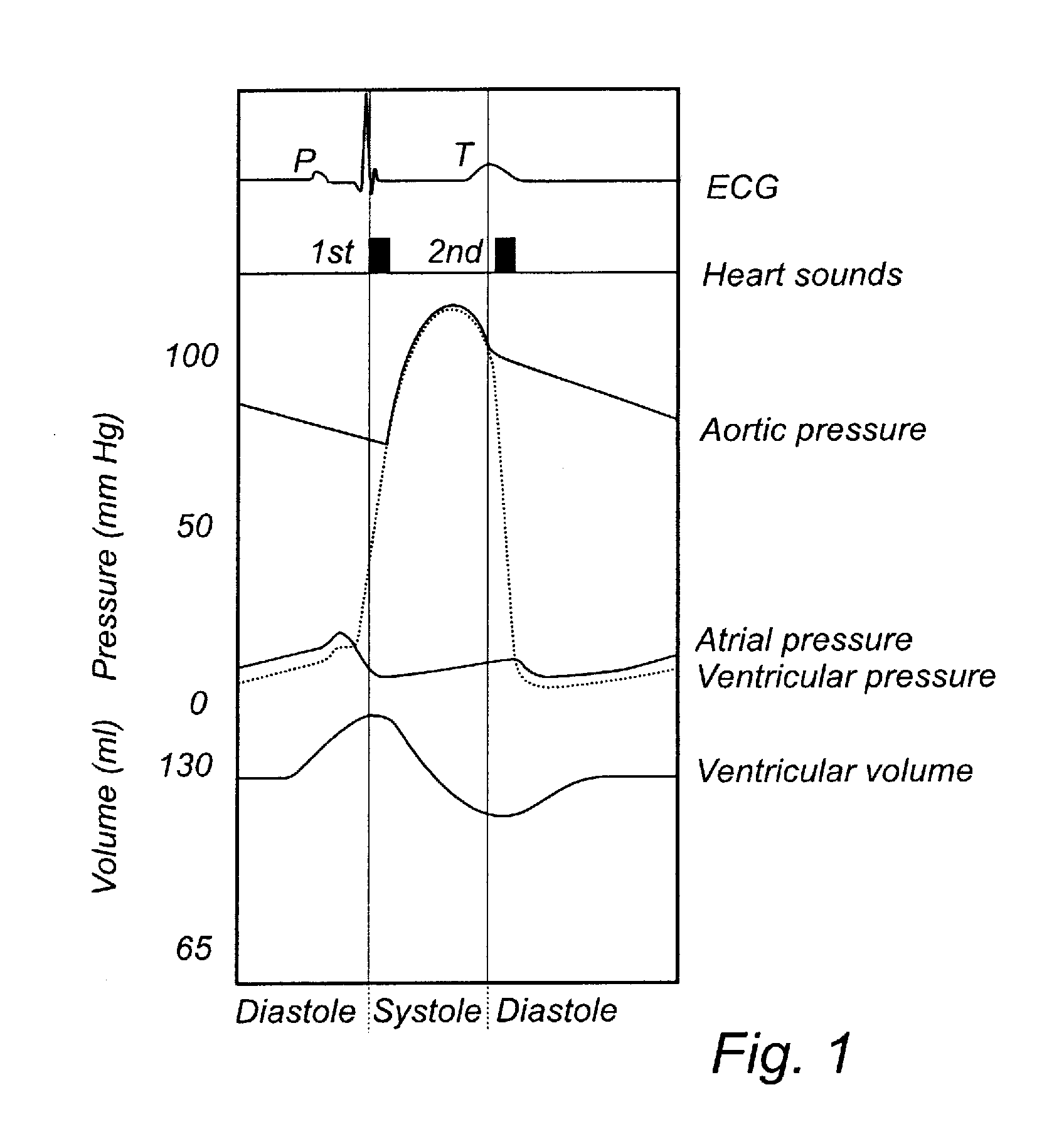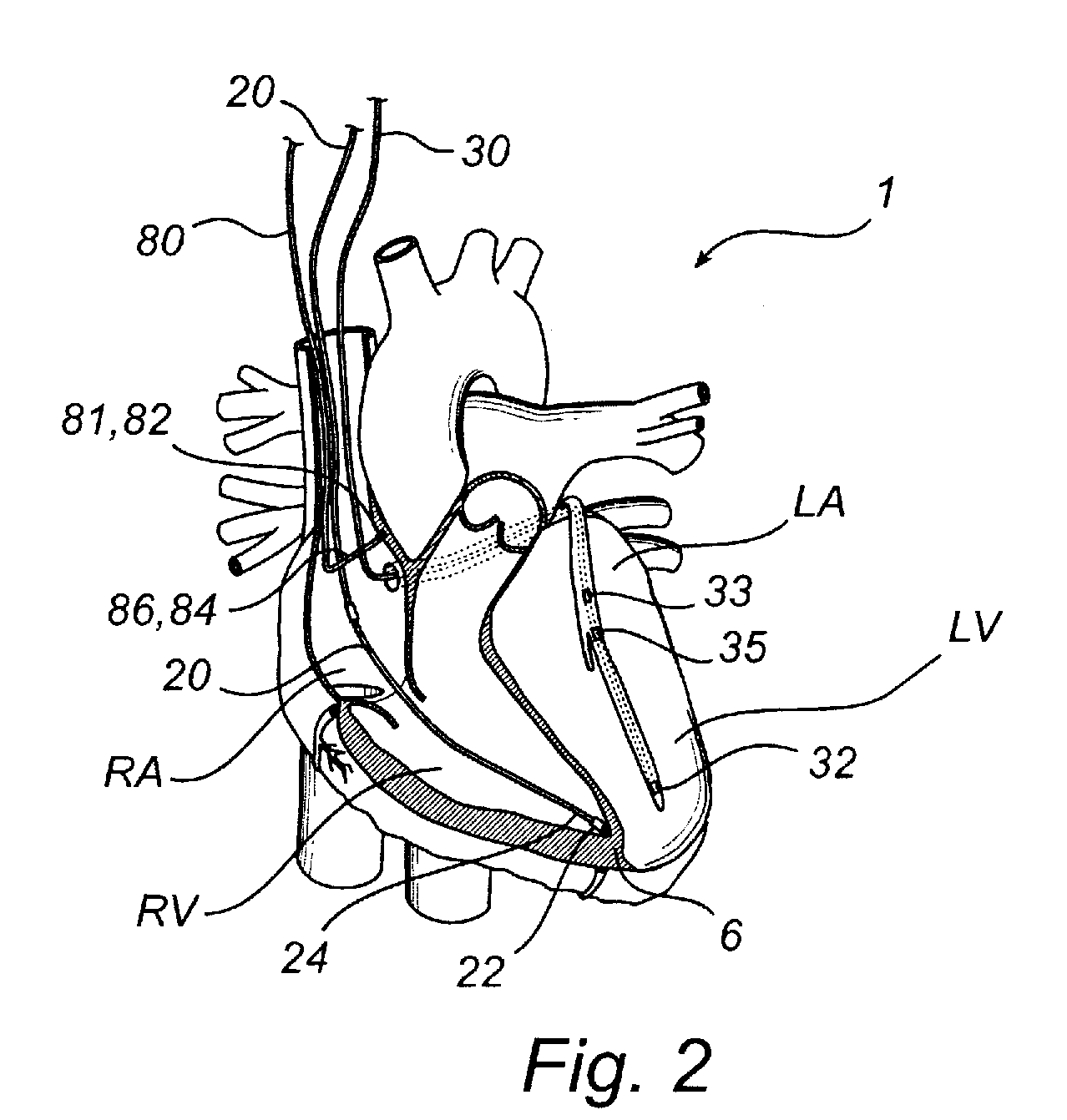Method, device, implantable stimulator and dual chamber cardiac therapy system
a dual-chamber cardiac therapy and stimulator technology, applied in the field of implantable heart stimulation devices, can solve the problems of unphysiologically fast ventricular rhythm, unpleasant patient experience, and period of undesired physiologically inadequate pacing therapy
- Summary
- Abstract
- Description
- Claims
- Application Information
AI Technical Summary
Benefits of technology
Problems solved by technology
Method used
Image
Examples
Embodiment Construction
[0048]The following is a description of exemplifying embodiments in accordance with the present invention. This description is intended for describing the general principles and specific embodiments of the invention and is not to be taken in a limiting sense. Thus, even though a biventricular heart stimulator will be described, the invention is also applicable to dual chamber stimulators with ventricular stimulation in one ventricle only. Furthermore, the invention is not restricted to pacemakers, but to any sort of cardiac stimulators having dual chamber pacing capability, such as implantable cardioverter defibrillators (ICD). The invention is also applicable to systems where only atrial sensing, not pacing, is provided. Please note that like reference numerals indicate structures or elements having same or similar functions or constructional features.
[0049]With reference first to FIG. 1, there is shown a schematic illustration of the relationships between different electrical and ...
PUM
 Login to View More
Login to View More Abstract
Description
Claims
Application Information
 Login to View More
Login to View More - R&D
- Intellectual Property
- Life Sciences
- Materials
- Tech Scout
- Unparalleled Data Quality
- Higher Quality Content
- 60% Fewer Hallucinations
Browse by: Latest US Patents, China's latest patents, Technical Efficacy Thesaurus, Application Domain, Technology Topic, Popular Technical Reports.
© 2025 PatSnap. All rights reserved.Legal|Privacy policy|Modern Slavery Act Transparency Statement|Sitemap|About US| Contact US: help@patsnap.com



